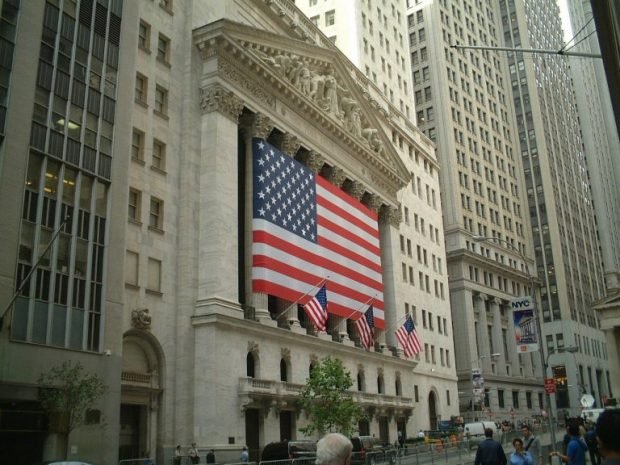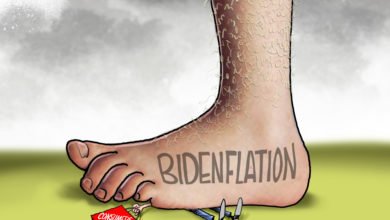Study: Lockdowns Had Largest Impact in Destroying Economic Activity
The world may be nearing the end of the coronavirus pandemic (at least we can hope), but the post mortems are just beginning.
A new paper from the National Bureau of Economic Research found important correlations between sales losses and lockdowns across counties in California.
Economists Robert W. Fairlie and Frank M. Fossen used state data from all taxable sales in California during the first two quarters of 2020, finding a drop of $152 billion in the second quarter alone, a 17.5 percent decline from the previous quarter.
Not all businesses experienced losses, of course. Some businesses deemed “essential” saw gains, such as pharmacies, liquor stores, supermarkets, agriculture, and building material & garden equipment stores.
Many economic sectors were not so lucky, the authors found.
Leading the way in sales losses was the accommodation sector (91 percent), followed by bars (86 percent). Entertainment venues saw sales drop 83 percent, while full-service restaurants saw a decline of 61 percent.
“Small shops selling Gifts and Souvenirs, Clothing, or Books also experienced large losses in the second quarter of 2020,” the authors concluded..
None of these results are particularly surprising. But the authors also identified something else important. Namely, they found that the decline in sales during the pandemic stemmed primarily from government lockdowns and other restrictions, not voluntary social distancing.
“The results (of our research) suggest that local implementation and enforcement of lockdown restrictions and voluntary behavioral responses as reactions to the perceived local COVID-19 spread both played a role,” the economists state, “but enforcement of mandatory restrictions may have had a larger impact on sales losses.”
Did the Virus Kill the Economy or Government?
There’s no question the US experienced an economic recession unlike any it had ever seen before, highlighted by a 33 percent GDP drop and 22 million jobs lost.
“The economic crisis is unprecedented in its scale,” Brookings Institution scholars wrote in a September paper, “the pandemic has created a demand shock, a supply shock, and a financial shock all at once.”
Few would deny the first claim—that the economic crisis is unprecedented in scale—but the second half contains a point of contention? Did “the pandemic” create the economic destruction or the collective response to the pandemic?
For months, the New York Times and others have implied it was the former.
“It will take years for the global economy to recover from the jobs taken away by the pandemic,” the Times reported in July.
Taken away by the pandemic. Numerous other examples by the Times and other media can be found espousing similar language.
This is not a question of simple semantics. Whether the greatest economic collapse in modern history was caused by a virus or the government’s response to the virus is not an inconsequential distinction. So did the pandemic take jobs away?
A recent Washington Post article says yes.
“…pandemic-related economic research shows the shutdowns aren’t killing jobs,” data journalist Andrew Vann Dam wrote, “the virus is.”
Vann Dam cites research from Indiana Indiana University economists Sumedha Gupta, Kosali Simon, and Coady Wing that analyzed dozens of pandemic and social distancing studies.
“Most of the economic damage we’ve seen is produced by people’s reaction to the virus,” Wing said. “Social distancing policies mattered, too, but they were layered on top of a major change in personal behavior.”
In this scenario, lockdowns weren’t the destroyer of economies. Fear and social distancing were.
Vann Damm also cites a study by economists Chad Syverson and Austan Goolsbee of the University of Chicago Booth School of Business who compared cell phone data to areas locked down to areas that were not.
“Business fell by more than half (53 percent) regardless of whether a place shut down, as people everywhere were trying to not to leave their homes,” Vann Dam writes.
This conclusion would seem to run counter to evidence from the NBER paper, which suggested government restrictions were primarily responsible for the economic damage.
Who’s Right?
Over the last year, the US economy and most others around the world were devastated. Who is ultimately held responsible for that destruction is not a trivial matter.
For nearly nine months, we’ve pointed out many of the unintended consequences of government lockdowns, which have included surging global poverty, mass job loss and business closures, spikes in depression and suicide, excess deaths, and other adverse social consequences..
As mentioned above, however, the Post would have you believe the damage was not the result of lockdowns.
“Governors shutdowns did not cause the pandemic jobs crisis,” the headline declares.
To arrive at this claim the paper relies primarily on two key points: 1) humans were social distancing even in the absence of mandatory restrictions, which resulted in a decline in economic activity; 2) jobs data do not show a wide divide between blue states and red states.
The first point is a non sequitur. It’s no revelation that people were social distancing and avoiding travel in the absence of mandatory restrictions. This fact was pointed out in many FEE articles, and it was used to demonstrate that lockdowns weren’t necessary because people were voluntarily modifying their behavior to lower the risk of exposure to a strange and deadly virus.
It simply does not follow that because people voluntarily adjusted their behavior, such actions would result in similar economic consequences. The foot traffic data the Post cites offers no clues about how humans prioritized travel or made purchases; it just shows they traveled less. This is a far cry from the research provided by Fairlie and Fossen, which analyzed the actual sales data of “essential” and “non-essential” businesses, and found mandatory restrictions had a much larger impact on sales losses.
The second point the Post provides is equally weak.
Vann Dam notes that, on average, red states have recovered faster than blue states. But he correctly notes that “even the simplest analysis shows job losses don’t depend solely on the governor’s party. Some red states struggled, some blue states thrived.”
One reason for this, he notes, is that many Republican-led states also enforced lockdowns. Despite this admission, Vann Dam proceeds to compare states based on red state and blue state criteria, offering numerous charts exploring differences in rural and urban areas.
This thoroughly undermines the claims that the lockdowns are only a minor factor in economic destruction, and that the virus itself is the real culprit.
But for the reasons Van Damm states, comparing red states and blue states doesn’t tell us very much. A far more helpful analysis would compare states with the most restrictive COVID policies with the states with the least restrictive policies. And that data is readily available, though you’ll not find it in the Post’s story—perhaps because the conclusion this data set reaches.
Data from Oxford University and the US Bureau of Labor and Statistics show that states with the most restrictive policies had substantially more unemployment than states with the least restrictive policies.
The governors of the most restrictive states did achieve one thing with all their interventions, though: unemployment nearly 2X that seen in the least restrictive states. pic.twitter.com/B6wwf7gna4
— PLC (@Humble_Analysis) December 21, 2020
Nor is this the only evidence that suggests lockdowns, not the virus, were the primary economic destructor. A brief look at history shows there was no massive economic collapse in previous pandemics that were similarly deadly (or more deadly).
Early in 2020 Ryan McMaken of the Mises Institute pointed out that the 2020 pandemic was starkly different from the pandemics of 1918 and 1957-58, both of which were incredibly deadly.
“Yet we will see that neither produced economic damage on a scale we now see as a result of the government-mandated lockdowns,” McMaken observed. “This thoroughly undermines the claims that the lockdowns are only a minor factor in economic destruction, and that the virus itself is the real culprit.”
The Horror of a Command Economy
Last June, I observed that in their zeal to use force to protect humans from a deadly virus, “experts” may have subjected Americans to a blunder greater than any since the Iraq War.
Following that blunder, experts and defenders of the conflict spent years attempting to deny they were actually wrong. The lockdowns, which have been shown to be far less effective at protecting lives than destroying economies, will be no different.
The horror of a command economy is not that officials will make mistakes, but that those mistakes will never be acknowledged or corrected.
David Mamet, the critically acclaimed playwright and screenwriter, observed in a November Wall Street Journal article that history is replete with examples of central planners who ruined economies through coercive policies.
The Holdomor. The Bengal Famine. Cambodia’s “killing fields.” Mao’s Great Leap Forward. Trofim Lysenko’s mad war on genetic science.
As horrifying as many of these examples are, their catastrophic results don’t capture the full terror of collectivism.
“The horror of a command economy is not that officials will make mistakes,” Mamet observed, “but that those mistakes will never be acknowledged or corrected.”
This is why the research in the NBER paper—which is based on actual state revenue data, not foot traffic at businesses—is so important.
If we are to avoid in the future the pain, suffering, and destruction experienced in 2020—pain which many of us still carry today—we must be honest about its causes.
This article was originally published on FEE.org



